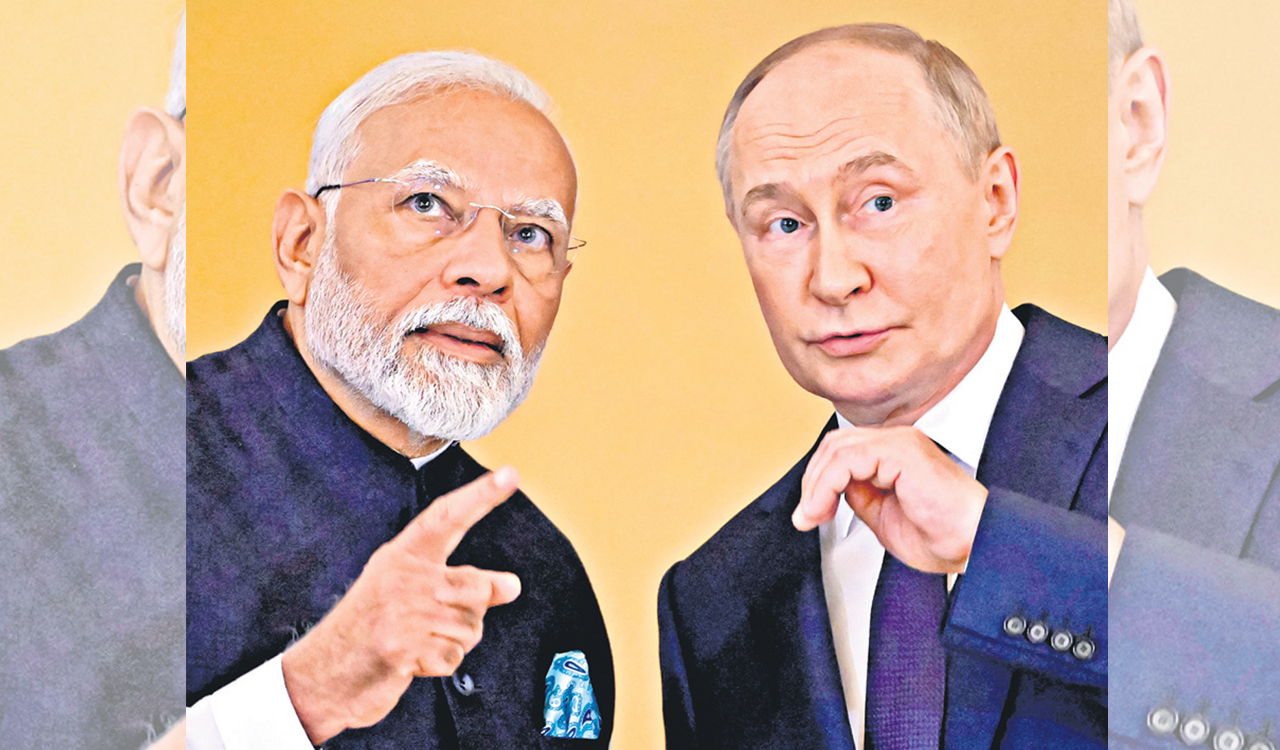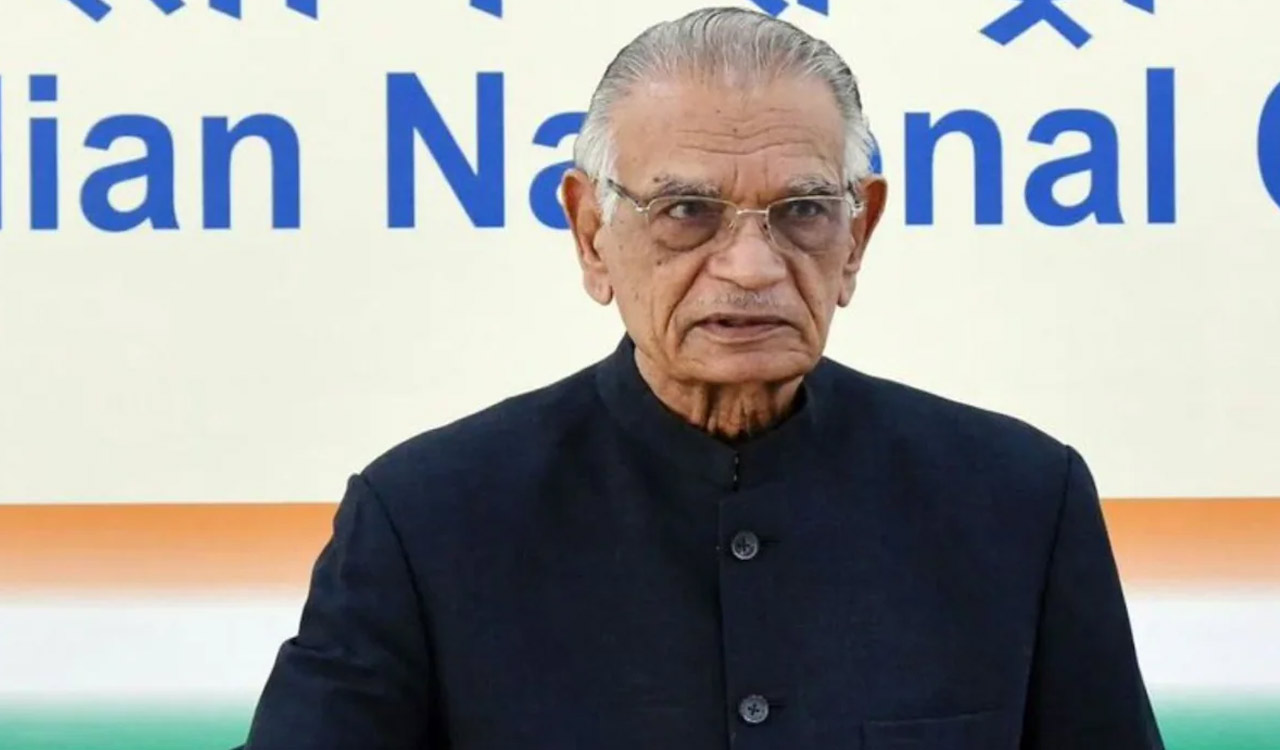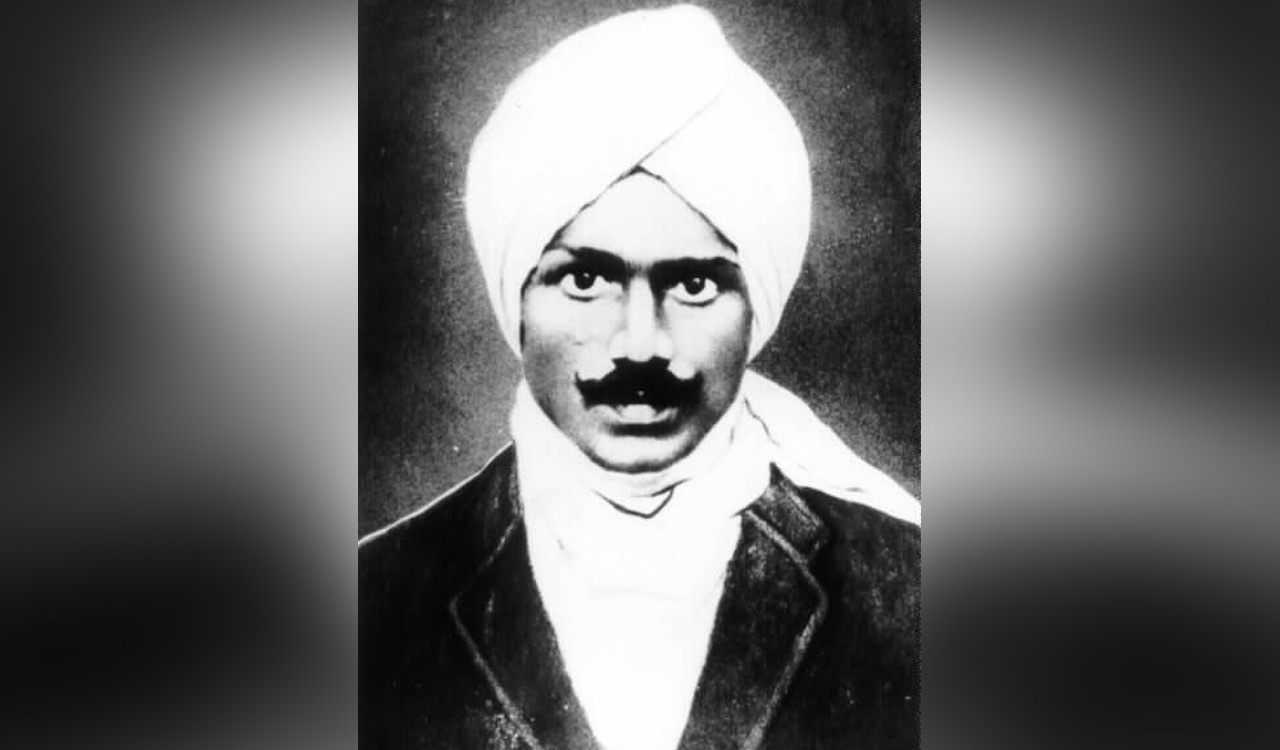Opinion: Beyond dialogue and diplomacy
Given the growing proximity between Russia and China, New Delhi cannot afford to alienate Moscow

By Anudeep Gujjeti, Dr Akhil Kumar
Over the past three years, there had been no annual bilateral summits between Moscow and New Delhi, the last being when Russian President Vladimir Putin visited India in 2021 before the Ukraine war broke out. Prime Minister Narendra Modi’s visit to Russia – he last visited Russia in September 2019 to attend the Eastern Economic Forum in Vladivostok – has revived it.
So far, 22 annual summits have taken place alternatively in India and Russia. After being sworn in as the Prime Minister, Modi visited Russia, unlike a tradition he followed by visiting a neighbouring country first in his earlier two terms, in June 2014 (Bhutan) and June 2019 (Maldives and Sri Lanka). It is noteworthy that the Prime Minister’s visit to Russia coincided with a period of significant political developments globally.
In the United States, Joe Biden’s candidacy for the upcoming elections faces uncertainty, and 32 nations convened in Washington to celebrate the 75th anniversary of the North Atlantic Treaty Organisation (NATO). Meanwhile, the United Kingdom has elected a new Labour Prime Minister, and in France, the far-right party has been pushed to a distant third position.
Though Modi yet again reiterated India’s stance and emphasised the “peaceful resolution” of the conflict through “dialogue and diplomacy”, it was not the core agenda of the bilateral summit. This summit was essentially an extension of the annual bilateral summits started in 2000, meant to review all facets of the bilateral relationship. It was intended to advance India’s interests while also addressing and exchanging views on regional and global issues between the two countries.
Approach towards Russia
Russia remains a traditional, long-standing and time-tested strategic partner of India and this relationship was solidified 53 years ago with the signing of the Peace, Friendship and Cooperation Treaty in 1971. The relationship has remained resilient over multiple geopolitical challenges. Over the years, India has consistently refrained from criticising Russia’s military actions — in Afghanistan in 1979, the conflict in Georgia in 2008, the annexation of Crimea in 2014 and Ukraine in 2022.
Although India has regularly advocated for diplomacy and dialogue between warring nations in several multilateral forums, New Delhi has continued to endure its relationship with Moscow since the war broke out between Russia and Ukraine. Speaking at the India-Russia Business Dialogue in 2023, External Affairs Minister Dr S Jaishankar described India-Russia bilateral ties as “among the steadiest of the major relationships of the world in the contemporary era”, which was reinforced with the latest summit visit by Prime Minister Modi.
Oil, Rupee-Rouble
Though Russia’s footprint in the Indian economy is marginal compared with other major economies such as the US and China, oil occupies a major share and remains a vital pillar in the bilateral trade between Moscow and New Delhi. India ranks third in oil consumption in the world and imports nearly 85%, projected by the International Energy Agency to reach 90% by 2040. Hence, Russia plays an important role in India’s energy sector, especially after the sanctions imposed on Iran and Venezuela. From April to December 2023, India procured Russian oil amounting to $34.4 billion, constituting almost 34% of all crude oil imports. In the latest summit, India and Russia agreed to explore “new long-term contracts” by stressing the importance of trade in energy resources.
Though Modi’s visit to Moscow is viewed through the prism of changing geopolitical world order, what is often overlooked are India’s interests
India imports about $60 billion a year in goods from Russia, and the latter buys less than $5 billion from India. In the joint statement released after the summit meeting, both countries agreed to increase bilateral trade and set a target of reaching $100 billion by 2030. However, India’s trade deficit with Russia remains a major concern. To address this, both countries emphasised the need to increase Indian exports to Russia to achieve a more “balanced and sustainable trade.”
They aim to strengthen cooperation in the industrial sector, especially in “advanced high-technology areas” by forming new partnerships. Both sides also agreed to explore the possibility of starting negotiations to sign a “bilateral free-trade agreement in services and investments.”
Impending issues such as the Rupee-Rouble deal, however, did not witness any major breakthrough as several rounds of negotiations failed to convince Moscow and New Delhi. Both sides agreed to continue working together to promote a bilateral settlement system.
Arms Sales
On the security front, though Russia remains the largest exporter of weapons to India, its share has decreased in recent years. According to a Stockholm International Peace Research Institute report, the share of Indian arms imports from Russia declined from 76% in 2009-13 to 36% in 2019-23. The main reasons for this include India’s policy to increase domestic defence production and diversify its defence procurement from several nations, especially from Western countries like the US and France, which together accounted for 46% of arms imports by India during 2019-23.
A significant shift in the India-Russia defence partnership was also visible. Rather than emphasising the import of defence equipment, the focus is now on collaborative research, development and production of advanced defence technologies and systems. In tune with India’s ‘Make in India’ initiative, both nations agreed to establish joint ventures for manufacturing spare parts of Russian-origin defence equipment within India. This ‘reorientation’ of the partnership aims to mitigate the risks associated with potential geopolitical disruptions that could affect defence supplies.
India’s Interests
Though the recent summit is viewed by world powers through the prism of a changing geopolitical world order amid the ongoing Russia-Ukraine war, what is often overlooked are India’s interests. To become a major power and enhance its economic clout (aspiring to become the third largest economy by 2030), India needs to control inflation, which involves securing cheaper and sustainable energy sources, an area where Russia is an important player. Additionally, Indian agriculture relies heavily on fertilizers, for which Russia is a significant supplier. Most importantly, to mitigate risks associated with geopolitical tensions, India aims to be self-sufficient in defence manufacturing, thereby avoiding dependence during major conflicts.
The growing proximity between Russia and China following Russia’s attack on Ukraine has prompted India to adopt a cautious approach. New Delhi cannot afford to alienate Moscow given the border stand-off with China and increasing terror attacks across the border with Pakistan. Issues such as these prompted India to further its ‘Special and Privileged Strategic Partnership’ with Russia. In doing so, India neither tried to balance nor counter any nation through this visit but only tried to further its relationship with an old partner by adhering to its age-old policy of strategic autonomy.

(Anudeep Gujjeti is a PhD candidate from Department of Political Science, University of Hyderabad, Research Associate, Council for Social Development, and Young Leader, Pacific Forum, US. Dr Akhil Kumar holds a PhD from Department of Political Science, University of Hyderabad)
Related News
-
Drone attacks kill two in Russia, Ukraine faces power outages amid peace talks
-
Was passionate about contributing to welfare of society: PM Modi saddened by passing of Shivraj Patil
-
Hyderabad man returns from Russia–Ukraine warzone with Union Government support
-
Subramania Bharati illuminated India’s cultural and national consciousness: PM Modi
-
AIIMS study finds no link between COVID-19 vaccines and sudden deaths
13 mins ago -
Centre eases norms, credit access to boost MSME growth
30 mins ago -
GHMC merger: Badangpet residents hope for improved infrastructure
37 mins ago -
SCR’s RPF to host 26th All India Police Band Competition in Hyderabad
47 mins ago -
‘Kasoor 2’ pushed me to my emotional and mental limits: Urvashi Rautela
1 hour ago -
Pak security forces kill 3 TTP terrorists in Khyber Pakhtunkhwa
1 hour ago -
Nauradehi tiger reserve to be 3rd cheetah habitat in MP before next monsoon: CM Yadav
2 hours ago -
India ranks third globally in AI competitiveness: Stanford
2 hours ago




